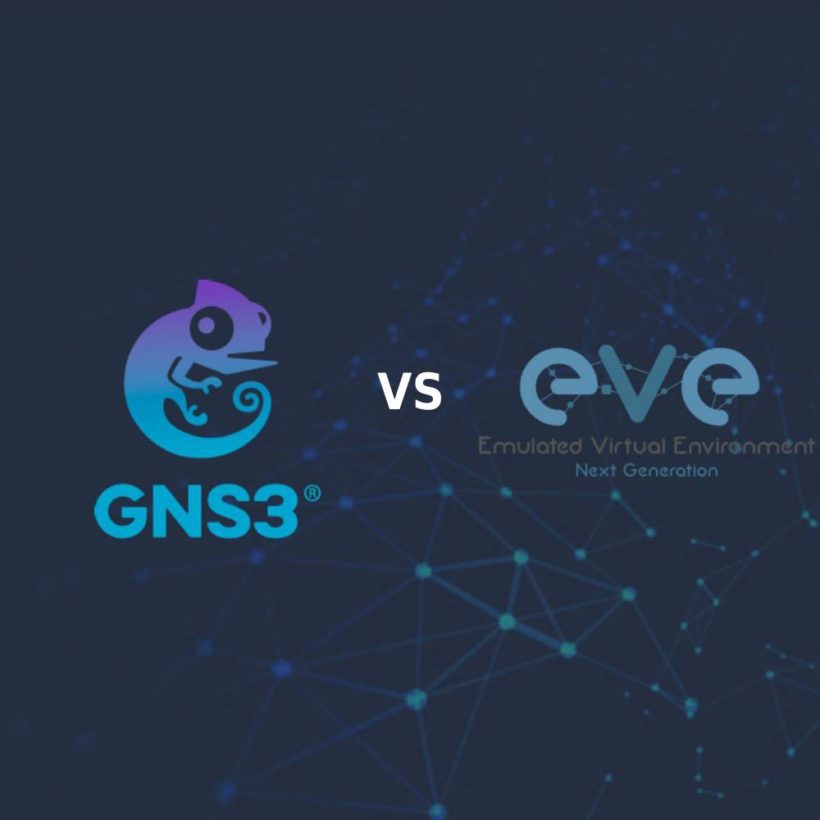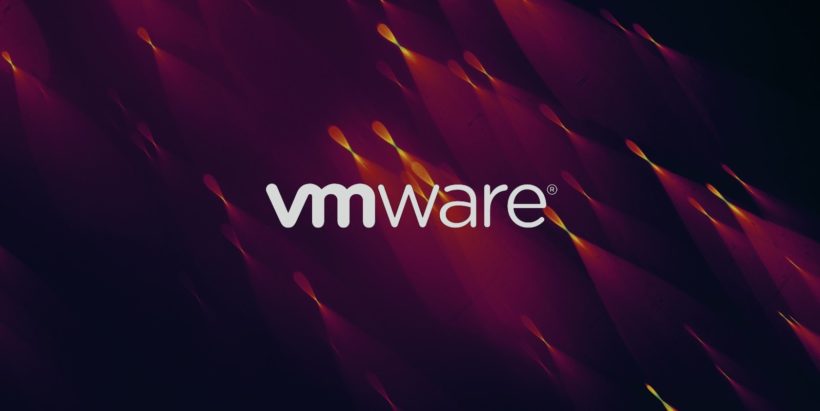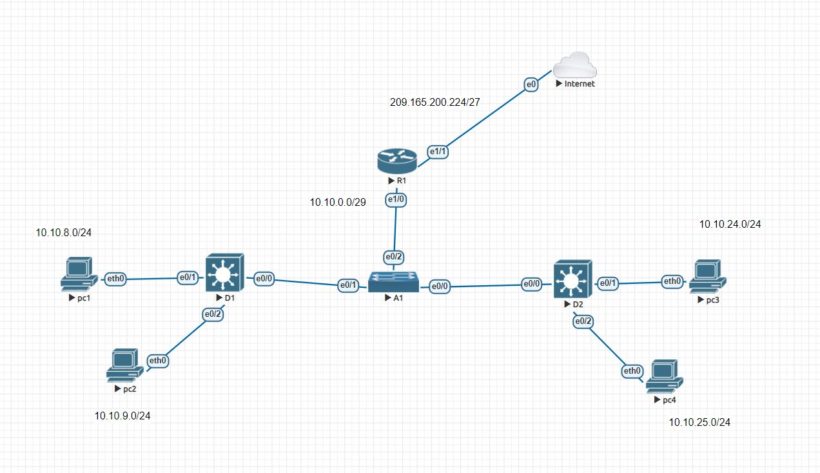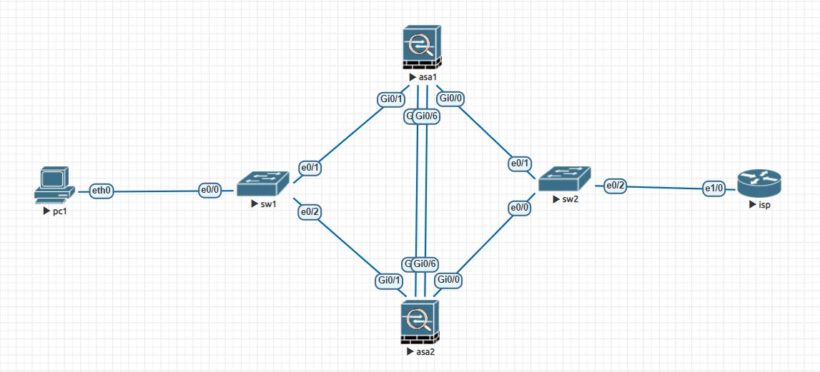Eve-NG and GNS3 have made it very easy to build virtual test networks really fast. With the functions produced by the virtual network devices inside GNS3 and EVE NG, it is easier for us to understand how the actual physical network devices are going to respond in the real world.
Network Emulators have many different use cases. Now, one may ask what is the role of an emulator in this whole scheme of things? An emulator in this case is a piece of software that allows it to behave just like a piece of hardware.
Are you looking to test out a production network? Want to know how to study for your next networking certification? This guide will walk through the differences between GNS3 and EVE-NG. After reading this article you will have a better idea of which software to use.
What is GNS3 or Graphical Network Simulator-3
GNS3 is a network emulator that allows network engineers to emulate, configure and test network devices without having to purchase real gear. This open-source platform allows for you to emulate vendors such as cisco, Fortinet, and more. GNS3 has been around for over 10 years, giving network engineers the ability to test and deploy networks.
What is EVE-NG or Emulated Virtual Environment
EVE-NG just like gns3 provides ways for you to emulate and test network devices without having to purchase real gear. EVE-NG allows for you to interact with virtual devices directly from your web browser. Many of its characteristics considerably help ease the usability of network topologies that you create and share. This will save you money and time in setting up what you need to test network changes, or it could mean that you will be able to complete tasks you never believed possible a lot faster.
GNS3 vs EVE-NG Feature Comparison
Both eve-ng and gns3 both share similar feature sets to a degree. Let’s go through some of the different features between both programs that can help you in choosing one over the other.
Subscription cost
Both Eve-ng and gns3 both are free networking emulators. GNS3 though is 100% free and open source, with no monthly or yearly license fees, this option makes it very interesting for small and large companies to utilize.
The only cost that is associated with the user will be by either obtaining the images needed through licenses from the vendor or from the actual device.
Eve-ng comes with 2 different versions, the community version and pro version. The community edition is completely free but comes with some limitations which can be found here. The pro version will cost you about $170 for a 1 year license.
The main features that limit you in the community edition of eve-ng are:
- You are limited to only 63 nodes per lab vs 1024 in the pro version
- In the community version you cannot connect links to devices that are already powered on
- limited to only 1 person signed into the program at a time on the community edition
- Cannot have more than one running lab
outside of that the cost structure puts gns3 at an advantage with no need to pay for anything with no restrictions besides having to find your own images, which is the same issue for both
Setup and configuration
Eve-ng setup
Eve-ng is available in either an OVF (open virtualization format) or an ISO file. The ovf file can be used to install on platforms such as vmware. The setup process is fairly easy once you apply the ovf file in esxi. After a couple setup steps during the install, you will be up and running in less than 5 minutes
With the ISO file you can install the program directly onto a bare metal server or laptop. The system requirements are very minimal requiring only about 8gb of ram, 40gb hard drive and a decent processor. As your lab grows you can add more resources such as ram to your system.
The great thing about eve-ng is that once you install the program you can get right to working but you still need to add some images which we will talk about below.
GNS3 setup
GNS3 can be set up on operating systems from windows 7 up to server 2019 and mac osx. The gns3 vm is also supported on ESXI and Bare metal cloud providers. If you are just starting out in your studies and looking to build basic topologies, then installing directly on your system or computer will suffice.
That means you will only install the all-in-on setup and not the gns3 vm. Once you begin to outgrow your setup you should move to the gns3 vm setup. Here are the complete steps to install the All-in-one version on windows. If looking to install the gns3 vm on esxi follow these steps here.
Comparing GNS3 and EVE-NG Usability
When using gns3 or eve-ng you may have different needs depending on the type of images you will be using and the vendor. eve-ng does not require too much knowledge of setup once you get the supported image imported. When using the htlm5 client you will get a great user-friendly interface that makes it easier to do more networking than configuring.
When first using gns3 I initially had to really understand how the images needed to be configured and a bunch of other parameters. Now again I was working with Cisco devices so it could be different depending on the vendor. The ability to upload images directly from the client is one advantage to using gns3 vs having to ssh in if using eve-ng.
Here are some videos is of a couple of labs that I have set up using eve-ng and of how easy it is to work with.
Access to Software Images
Both gns3 and eve-ng require you to obtain the software images yourself to be able to emulate them in their software. When adding images to eve-ng it will require some knowledge of linux, but not a lot.
Eve-ng has a list of support images here. To add images, the easiest way is to use a program called filezilla. Then you will be able to ssh into the machine and drop the images directly in the linux folder indicated in the documentation.
Compared to eve-ng, gns3 has the ability to allow you to upload the vm directly into the software but may need some tweaking depending on the type of image. Gns3 does in my opinion have more of a learning curve when initially getting the setup going compared to eve-ng that doesn’t need any tweaking of the images.
Conclusion
Both platforms are great and with the popularity of both, I don’t see them going away any time soon. The ability to use eve-ng in the browser without needing a desktop client is great. This decreases the amount of resources a end user would need.
As far as cost I feel the eve-ng community version is sufficient for very large labs. All my labs done on letmetechyou.com are done using eve-ng such as ones like this.
Gns3 has a great website and community of developers that continue to make it grow. It also has a great marketplace you can use to download labs and appliances. If you plan to use gns3 a lot in your career, they offer an academy you can attend to also achieve a certification.




Great review. I was searching for guidance on how to set up a virtual lab to refresh my knowledge and your channel is just perfect. Thanks.